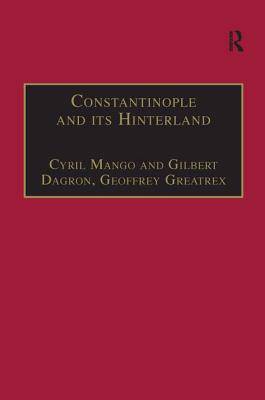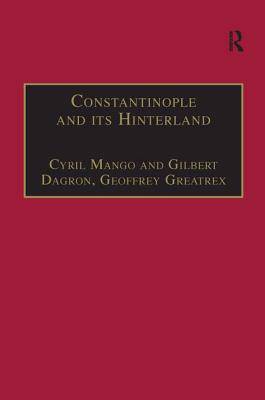
- Afhalen na 1 uur in een winkel met voorraad
- Gratis thuislevering in België vanaf € 30
- Ruim aanbod met 7 miljoen producten
- Afhalen na 1 uur in een winkel met voorraad
- Gratis thuislevering in België vanaf € 30
- Ruim aanbod met 7 miljoen producten
Zoeken
Constantinople and Its Hinterland
Papers from the Twenty-Seventh Spring Symposium of Byzantine Studies, Oxford, April 1993
Cyril Mango, Gilbert Dagron
€ 195,95
+ 391 punten
Omschrijving
From its foundation, the city of Constantinople dominated the Byzantine world. It was the seat of the emperor, the centre of government and church, the focus of commerce and culture, by far the greatest urban centre; its needs in terms of supplies and defense imposed their own logic on the development of the empire. Byzantine Constantinople has traditionally been treated in terms of the walled city and its immediate suburbs. In this volume, containing 25 papers delivered at the 27th Spring Symposium of Byzantine Studies held at Oxford in 1993, the perspective has been enlarged to encompass a wider geographical setting, that of the city's European and Asiatic hinterland. Within this framework a variety of interconnected topics have been addressed, ranging from the bare necessities of life and defence to manufacture and export, communications between the capital and its hinterland, culture and artistic manifestations and the role of the sacred.
Specificaties
Betrokkenen
- Auteur(s):
- Uitgeverij:
Inhoud
- Aantal bladzijden:
- 448
- Taal:
- Engels
- Reeks:
Eigenschappen
- Productcode (EAN):
- 9780860784876
- Verschijningsdatum:
- 27/04/1995
- Uitvoering:
- Hardcover
- Formaat:
- Genaaid
- Afmetingen:
- 156 mm x 233 mm
- Gewicht:
- 792 g

Alleen bij Standaard Boekhandel
+ 391 punten op je klantenkaart van Standaard Boekhandel
Beoordelingen
We publiceren alleen reviews die voldoen aan de voorwaarden voor reviews. Bekijk onze voorwaarden voor reviews.











